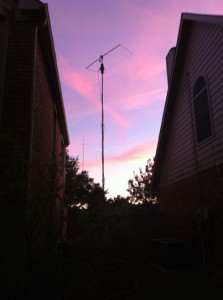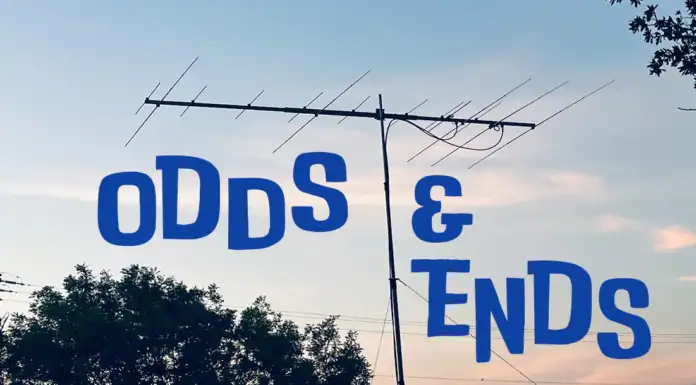I’ve just installed a Yaesu G-450A rotator to point my six-meter stressed moxon in the right direction. The last time I put a rotator in place was in the 1970’s propelling a 2 meter four element quad that I’d made out of lumber and aluminum wire. That was a low-cost television rotator on a roof top tripod. This one is far more robust and on my push-up mast strapped to an arbor type of structure in my side yard.
You’ll note my previous posts on VHF and then on the stressed moxon. I’d also been using a 15 meter moxon for contests. For that antenna and contesting, I could use the armstrong method of rotating to follow the sun across the earth to chase contacts as propagation changed. However, on six meters while some Es is in a general direction, it often changes. Plus, where I have the antenna mounted it is not very easy to run out there, up a ladder, and shift the antenna. So the need for a rotator.

I had considered a TV rotator. But reading the reviews and recalling my own problems with stuck gears, I decided I needed something better. Plus, I do have hopes of placing a 2 meter antenna on the same rotator at some point. The Yaesu G-450A fit the bill and had a number of very good reviews. Plus, I really like the control box and layout of the direction meter. Moreover, I found some excellent pricing and free shipping at GigaParts. The rotator cable came from Texas Towers. It’s the six conductor cable made by Davis RF.
I did read that it was challenging to solder the wires onto the rotator connector and to crimp the wires onto the control box connector. I didn’t have any issues with the soldering. The crimping gave me one anxious moment when I was testing the continuity. One of the pins was not making a connection. So I had to pull the whole thing apart and recrimp it. After that it worked fine.
I will say that this is not an easy project. It’s not like my typical installation of stringing some coax, pulling a wire with center mounted balun up the pushup mast, and then testing the SWR. This one required a great deal of planning and then quite a bit of tweaking to get everything to mesh nicely.
My full list of challenges included finding that the pushup mast’s topmost mast is 1-1/4″ in diameter. That won’t work for this rotator at all. So I had to use the next section of mast, which worked just fine. Moreover, I’d foolishly tried to use a Radio Shack 1-1/4″ mast for the moxon. The antenna fits just fine but not the rotator. So it was off to Lowe’s to find some steel plumbing pipe. One section fit the rotator and then through other fittings down to a smaller pipe to fit the moxon, which can only go up to a 1-1/2″ mast. When I eventually add 2 meters, I’ll need to get a section of 1-1/2″ mast to mount both antennas.
For coax, I used a section of LMR-240 Ultraflex, with six turns for the current balun that’s recommended for the antenna, to provide flexible cable around the rotator. Then I connected to Davis RF Bury Flex for the run to the shack. I like the low loss characteristics of this cable and the nearly bullet proof nature of the jacket. Plus, I’d found some excellent pricing on eBay.
After those considerations there was the routing. My shack is actually on the second floor and I could run the cable from the mast to the nearby window. Rather than looking like a clothesline, and irritating the neighbors still more, I ran the cables down the mast, through a PVC electrical conduit to the lightning arrester and then up the side of the house to the window. I used nylon cable clamps to secure the rotator cable, the six meter coax, and the MA6V coax several places along the way. I also have a homemade window entrance with coaxial cable connectors. I drilled a hole for the rotator cable to pass through.
So that was my big weekend project. Actually, I’d been planning, testing, and getting ready of this installation for about the past two months, if not more. So, it’s not like stringing a wire, but I’m hopeful it will really make a difference in the VHF contests and when the Es openings occur. I’ll keep you posted on my results.






